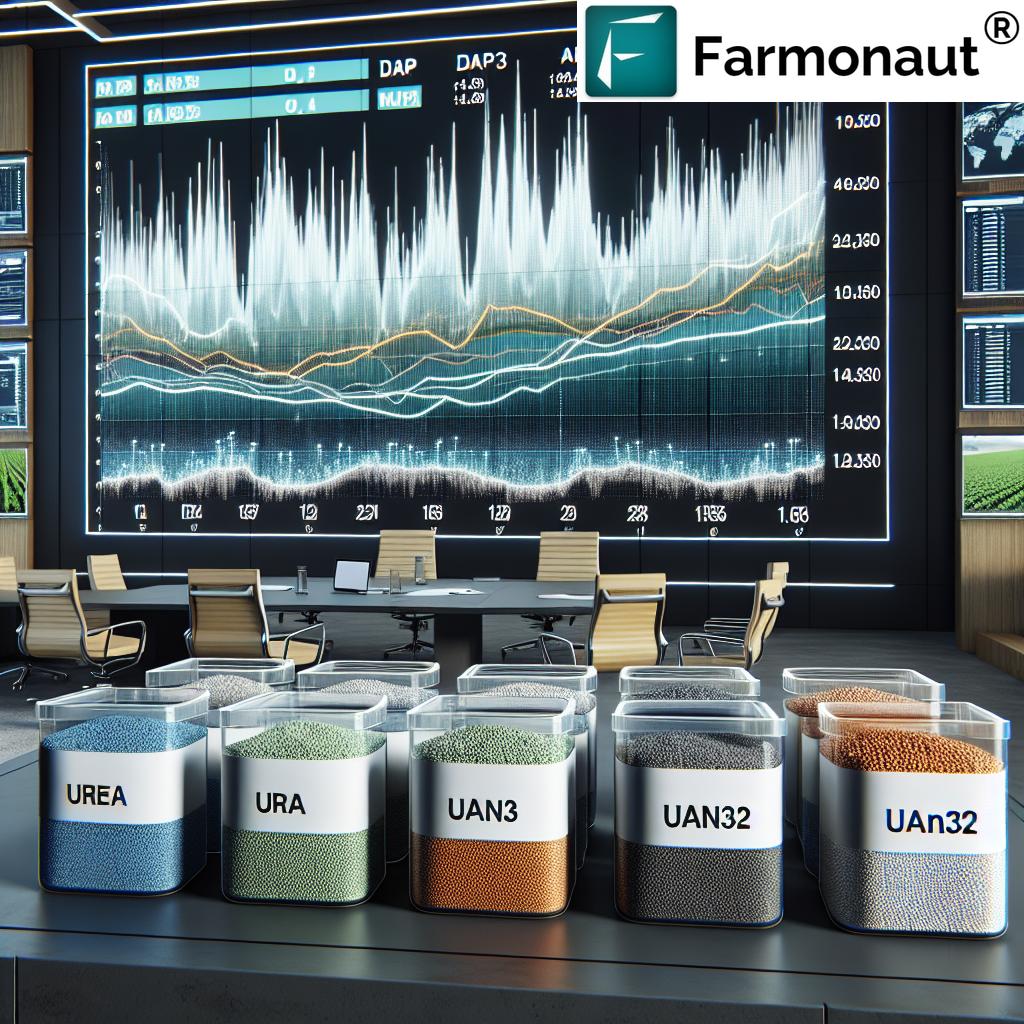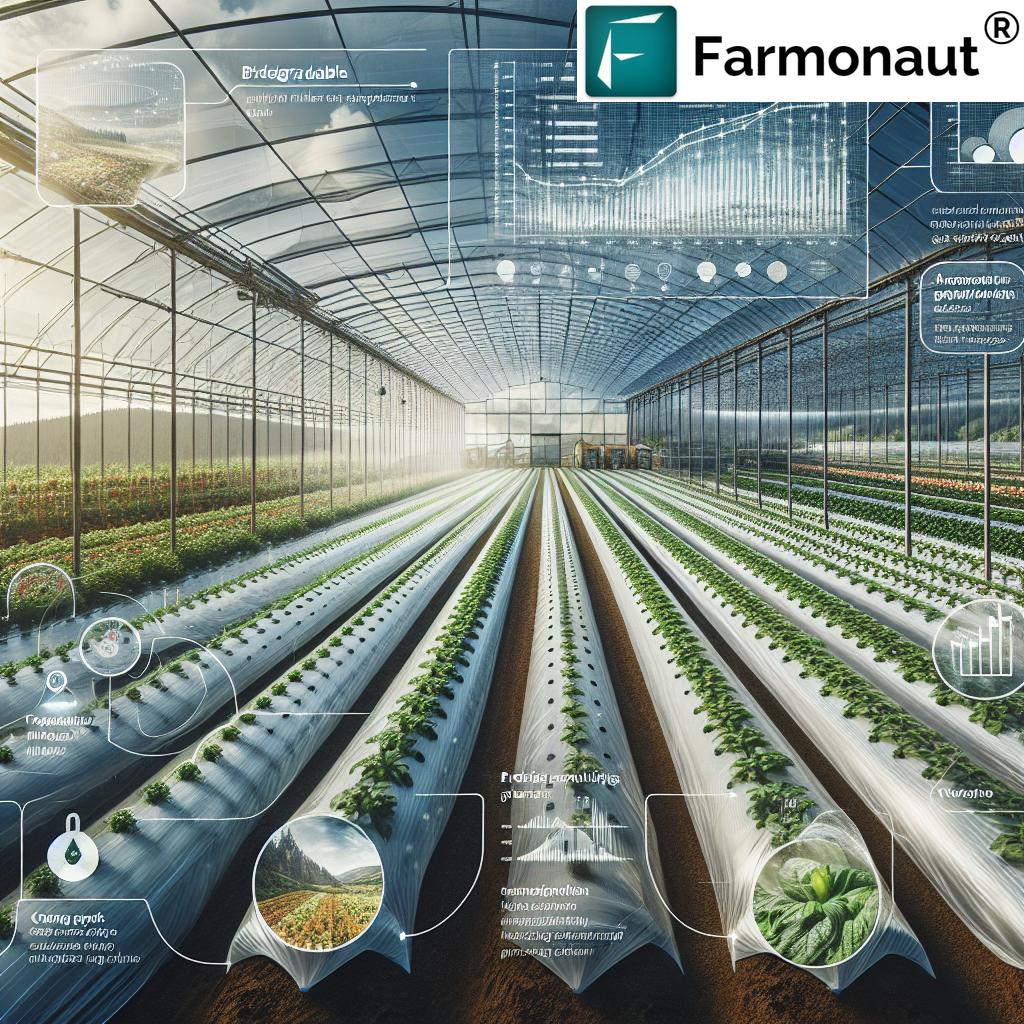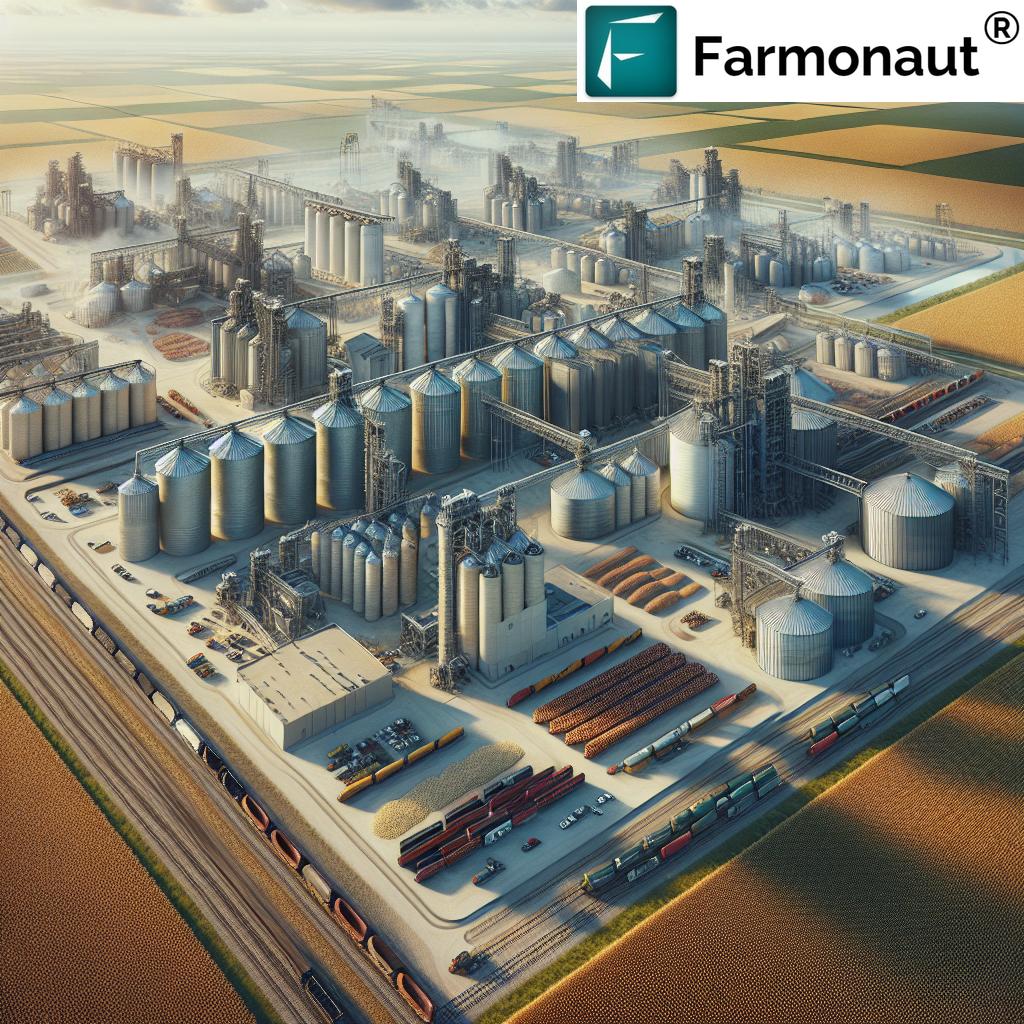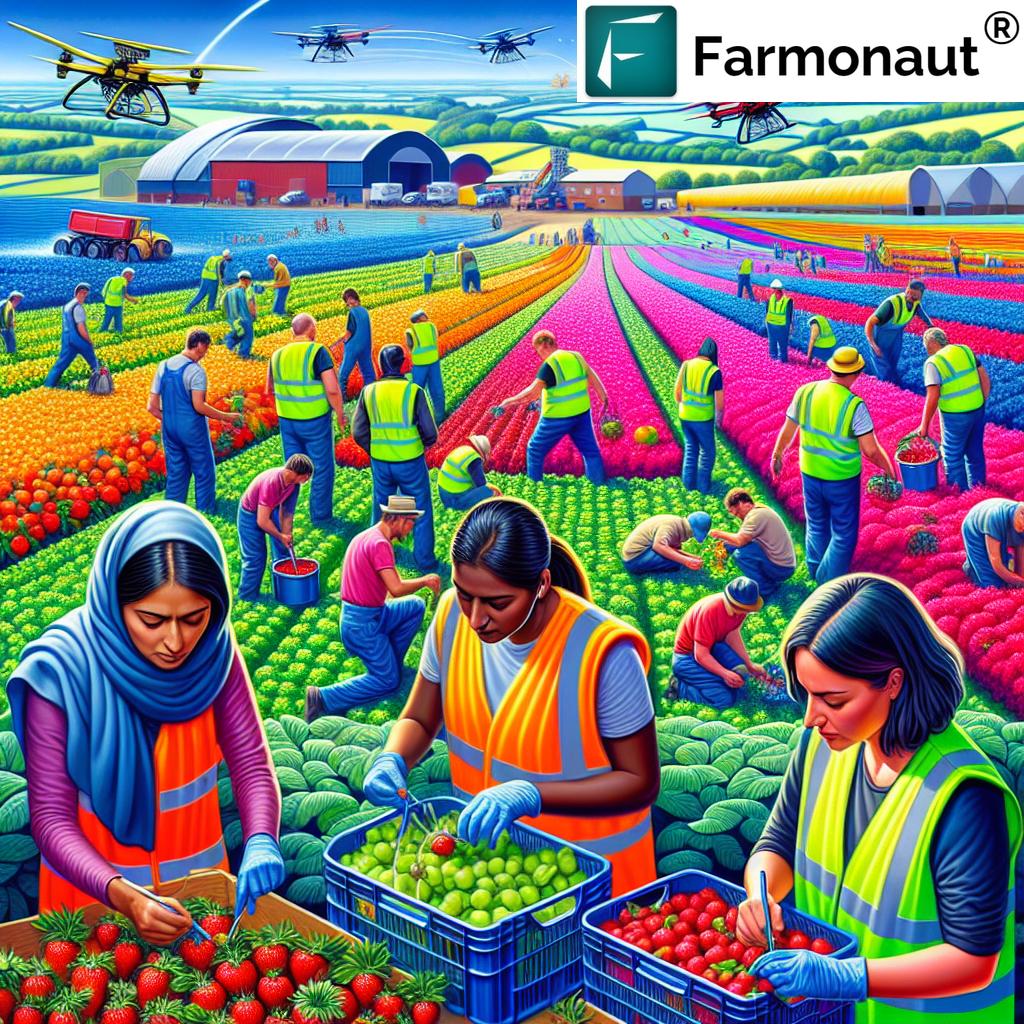Cotton Plant Day 2025: Cotton Plant Innovations
- Introduction: The Significance of Cotton Plant Day 2025
- Groundbreaking Trivia
- Why Innovation Is the Focus in 2025
- The Evolution of the Cotton Plant across Global Agriculture
- Regenerative Agriculture and the Sustainability Movement in Cotton
- Precision Cotton Farming: Technological Transformations
- Timeline: Cotton Plant Innovations & Sustainable Impact
- Field Demonstrations & Farmer Knowledge Sharing
- Cotton and Climate Resilience: Adapting for the Future
- Revolutionizing Harvesting & Processing With Technology
- Supporting Economic Resilience for Cotton Farmers
- Reducing the Environmental Footprint in Cotton Growing and Industry
- Farmonaut: Empowering Sustainable Cotton Cultivation
- Farmonaut Subscription Plans
- Frequently Asked Questions
- Conclusion: Looking Ahead Beyond 2025
Introduction: The Significance of Cotton Plant Day 2025
Cotton Plant Day 2025 is more than just a date on the calendar—it’s a globally celebrated occasion that recognizes the pivotal role the cotton plant continues to play in agriculture, textile industries, and rural economies. Annually observed by millions of stakeholders across the world, cotton plant day has become a powerful platform to highlight advancements in sustainability, industry-changing innovations, and the resilience at the heart of modern cotton farming.
As we navigate the evolving landscape of 2025 and beyond, the focus for this year’s cotton plant day theme is squarely centered on fostering a sustainable future. This means accelerating eco-conscious practices, integrating technological breakthroughs, supporting economic stability for cotton farmers, and empowering the broader global sector to thrive despite mounting environmental challenges. With the world’s demand for sustainable fiber on the rise, cotton—one of the oldest and most important crops—remains as vital as ever.
“**Cotton innovations in 2025 have reduced water usage by up to 30% compared to a decade ago.**”
Why Innovation Is the Focus for Cotton Plant Day 2025
The journey of the cotton plant is deeply intertwined with the fabric of global agriculture and the textile industry. In 2025, we are witnessing unprecedented integration of sustainability-focused innovations within the sector. The emphasis during cotton plant day shifts towards critical advances:
- Sustainable farming methods to reduce the environmental impact of cotton cultivation and processing.
- Technological tools and AI in every step—from planting and irrigation to pest management, harvesting, and processing.
- Economic resilience—creating better livelihoods for millions of rural farmers worldwide.
- Empowering knowledge-sharing across stakeholder groups and international boundaries.
These elements define the modern narrative of the cotton industry and form the backbone of cotton plant day 2025 celebrations. This commitment ensures that the global cotton sector remains a sustainable powerhouse for future generations.
The Evolution of the Cotton Plant across Global Agriculture
Cotton is not just another crop—it is the world’s most important fiber crop, underpinning clothing, culture, and economic security for millions. Its journey from wild perennial to a cornerstone of global agriculture and industry is nothing short of extraordinary.
Cotton plant day brings together stakeholders, practitioners, industries, and sectors to celebrate and reflect upon sustained progress:
- Ancient Origins: The domestication of the cotton plant began over 7,000 years ago, with India, the Americas, and Africa as key cradles of cultivation.
- Industrial Backbone: The cotton gin’s invention in the 18th century fueled the textile industry, shaping the economic fabric of the modern world.
- Modern Innovation: Precision agriculture, improved cotton varieties, organic methods, and integrated pest management continue to propel cotton into the future.
Globally, the integration of advanced agronomic principles, regenerative practices, and digital technologies is helping cotton production evolve rapidly in the 21st century.
Regenerative Agriculture and the Sustainability Movement in Cotton
Sustainability is the defining theme for cotton plant day 2025—and nowhere is this more evident than in the remarkable adoption of regenerative agriculture techniques.
Regenerative practices not only increase yield and productivity but also help sustain the essential soil health and biodiversity vital for long-term resilience. Key practices gaining ground across the world include:
- Crop rotation: Reduces disease risk and improves nutrient cycling in cotton fields.
- Cover cropping: Shields soil from erosion, enhances organic matter, and supports beneficial organisms.
- Reduced tillage: Minimizes soil disturbance, locking in carbon and water.
- Organic amendments: Boost fertility, encourage microbial activity, and reduce chemical dependence.
The result is a significant drop in carbon emissions, increased soil productivity, and stronger resistance to climate stress. As demonstrated by dynamic field demonstrations and interactive workshops during cotton plant day, these techniques are being embraced from India and Pakistan to the United States, Brazil, Africa, and beyond.
Did you know? Regenerative practices like carbon footprinting are now streamlined with satellite-based monitoring to help farmers combat climate change and report sustainability gains.
These advances are helping reduce the environmental impact of cotton cultivation —making the crop more climate-smart and future-ready.
Cotton Plant Day 2025 Focus: Timeline of Cotton Plant Innovations & Sustainable Impact
Explore how major milestones in the cotton sector have transformed both productivity and ecological stewardship:
| Year of Innovation | Innovation Name/Description | Key Sustainable Practice(s) Introduced | Estimated Impact on Yield (%) | Estimated Environmental Benefit |
|---|---|---|---|---|
| 1960s | Hybrid Cotton Varieties | Cross-breeding for higher yield and pest resistance | +15% | Reduced pesticide requirement (up to 10%) |
| 1990s | Bt Cotton (Biotech Cotton) | Genetic pest resistance, integrated pest management | +22% | Reduced synthetic insecticide use by over 30% |
| 2000s | Precision Irrigation Systems | Drip and sprinkler irrigation, soil moisture monitoring | +10% | Reduced water use by 15-20% |
| 2015 | Digital Farm Management Platforms | Satellite/GIS-based crop monitoring, digital input management | +8% | Reduced fertilizer & pesticide overuse by 18% |
| 2020 | Cover Cropping & Reduced Tillage Adoption | Regenerative practices for soil health and carbon sequestration | +5% | Enhanced soil carbon by 0.5–1.2 t/ha annually |
| 2022 | AI-Enabled Automated Harvesting Machines | Robotic picking, minimal fiber damage, labor reduction | +18% | Reduced harvest loss by 15%, saved labor hours |
| 2023 | Satellite-based Carbon Footprinting & Environmental Tracking | Real-time carbon and resource monitoring | Variable impact | 30% faster sustainability compliance reporting |
| 2025 | Widespread Regenerative and Digital Practice Integration | End-to-end satellite-AI management, block-chain traceability, optimized inputs | +25% | Water usage reduction ≥30%, chemical use cut by 35%, major climate resilience boost |
Field Demonstrations & Knowledge Sharing: The Heart of Cotton Plant Day
A signature feature of cotton plant day 2025 is on-the-ground demonstrations and workshops that bring together experts, farmers, and industry leaders. These events underscore not just what is possible, but what is being achieved in real cotton fields throughout the world.
Educational sessions cover a wide spectrum:
- Live showcases of drone-based crop monitoring for better pest management.
- Workshops on optimized irrigation techniques and soil management methods.
- Farmer training in real-time digital platforms for tracking crop health and making informed decisions.
- Demonstrations of blockchain-based traceability tools, safeguarding supply chain transparency and fostering consumer trust.
Across continents, from smallholder cotton fields in India and Africa to large commercial operations in the USA and Brazil, such sharing drives adoption of innovations that increase yields while protecting the environment.
Cotton Plant Day 2025 and the Pursuit of Climate Resilience
Climate change poses a crucial challenge to agriculture—and the cotton crop is no exception. With unpredictable rainfall, temperature extremes, and new pest/disease pressures, resilience is central to the sector’s future.
Innovative responses are now at the core of cotton plant day 2025:
- Development of drought-tolerant cotton varieties through molecular breeding and biotechnology.
- Artificial intelligence models to predict disease outbreaks and optimize input use.
- Advanced climate-smart agronomy practices—like variable-rate irrigation and site-specific nutrient management.
- Supporting biodiversity corridors in and around cotton fields to naturally control pests and sustain ecosystems.
The integration of these advancements not only ensures stable yields but also positions cotton as a model for climate adaptation in global agriculture.
Precision Cotton Farming: Technological Transformations for 2025
Technology is the beating heart of modern cotton cultivation—and the adoption of precision and digital innovations is transforming the industry from the ground up. Here’s how high-tech solutions are shaping cotton plant day 2025 conversations:
- Satellite imagery and multispectral analysis for continuous field health monitoring (NDVI, NDWI, LAI, etc.).
- AI-driven platforms that process data and serve actionable recommendations directly to farmers’ smartphones.
- Automated drone spraying and input management to minimize chemical waste and environmental exposure.
- End-to-end farm management systems that enable tracking, reporting, and traceability—every stage from planting to harvest.
Such platforms help in reducing input costs, maximizing yields, and lowering resource dependency and waste. They also give smallholders the ability to make informed decisions, enhancing both resilience and profitability.
Highlight: Precision Platform for Large Scale Farm Management
One outstanding example of digital transformation in farming is Farmonaut’s Large Scale Farm Management platform. Designed to support commercial cotton growers, this solution allows real-time tracking of crop health, irrigation needs, pest outbreaks, and more—across vast plantations. The benefit? Enhanced decision-making, reduced operational costs, and data-driven strategies that boost both yield and sustainability.
Global Progress: Geographic Spread and Regional Variations
As we reflect on cotton plant day 2025, it’s important to recognize the globalization of sustainable practices and digital tools:
- In India, precision irrigation and block-chain traceability help smallholder farmers drive transparency and resource efficiency.
- The United States is a leader in AI-equipped harvesting, large-scale satellite monitoring, and reduced tillage for climate-smart cotton.
- Brazil and Australia focus on integrating low-input, high-output agronomy with leading digital farm advisory systems.
- African cotton economies are leveraging mobile-based digital extension services to empower rural communities with the latest innovations.
This worldwide synergy amplifies the transformative power of advanced cotton practices for a sustainable tomorrow.
“**Over 50% of global cotton farms now adopt sustainable practices celebrated on Cotton Plant Day 2025.**”
Revolutionizing Cotton: Automated Harvesting & Processing
Modern cotton harvesting and textile processing have undergone profound changes thanks to automation and artificial intelligence.
Key achievements in 2025 include:
- Automated harvesting machines equipped with AI and multispectral sensors—ensuring efficient picking with minimal fiber damage and reduced labor dependencies.
- Quality enhancement: Fewer impurities, more uniform cotton lots, improved ginning and spinning for higher grade textiles.
- Reduction in harvest loss and improvement in post-harvest collection logistics.
- Eco-efficient factories with AI-driven quality assessment to reduce waste and maximize resource use.
Advanced mechanical and digital tools not only increase yield and cut operational costs—they also lead to better, more environmentally responsible outputs throughout the entire value chain.
Product Traceability: Building Consumer Trust and Supply Chain Transparency
Transparency is a rising demand, both for brands and conscious consumers.
Directly integrating blockchain-based traceability into cotton supply chains enables easy verification of practices, origin, and processing:
- Reduces fraud and error
- Proves compliance with organic and fair-trade standards
- Boosts value for sustainably grown cotton
Farmonaut’s product traceability platform leverages satellite and blockchain for verifiable tracking—from farm to finished textile. This fosters market access and consumer confidence for the global cotton sector.
Supporting Economic Stability for Cotton Farmers
At the heart of all cotton plant day celebrations in 2025 is a commitment to strengthening the livelihoods of cotton farmers. Global market volatility, unpredictable weather, and pricing pressures remain core challenges.
How is economic security being advanced?
- Fair trade certifications and minimum support price guarantees.
- Government incentives for adoption of sustainable and digital practices.
- Expanding access to satellite-verified crop loan and insurance to underpin financial resilience and risk mitigation. Explore how Farmonaut’s platform supports agriculture credit and risk management for the cotton industry.
- Financial literacy workshops and programs to encourage youth participation in agriculture.
The aim: to empower both large-scale and smallholder cotton growers to sustain their farms and communities, innovate, and thrive long-term.
Reducing the Environmental Footprint in Cotton Growing and Industry
Beyond the field, the cotton sector is recognizing its responsibility for:
- Minimizing water and chemical use in both cultivation and textile processing
- Increasing the share of organic cotton in the global market
- Recycling cotton fabrics to foster a circular economy
- Shifting mills and ginneries towards renewable energy sources
On cotton plant day 2025, these topics are highlighted in forums, policy workshops, and public campaigns led by industry and agriculture leaders worldwide. The resulting impact? A notable shift in global sustainability rankings for the cotton sector.
Farmonaut: Empowering Sustainable Cotton Cultivation
As we celebrate cotton plant day 2025, we recognize the essential role of digital transformation in today’s agricultural world. At Farmonaut, we leverage satellite imagery, artificial intelligence, and blockchain-driven systems to arm farmers and cotton stakeholders with actionable insights directly on their devices—be it web, Android, or iOS.
How do our solutions empower the cotton sector?
- Satellite Monitoring: We provide continuous, high-resolution satellite updates, visualizing cotton crop health (NDVI), soil moisture, pest outbreaks, and yield estimations—delivering information to enhance on-field decisions and sustainable practices.
- Jeevn AI Advisory System: Our AI analyzes satellite data and local weather, providing farmers with real-time, hyper-local strategies for irrigation, fertilization, and pest control that’s tailored for their fields.
- Blockchain Traceability: We ensure supply chain transparency from seed to store, reinforcing trust in sustainably grown cotton through provenance verification tools.
- Environmental Impact Tools: Our platform enables carbon footprint tracking, helping cotton farms and enterprises meet emerging environmental standards and compliance benchmarks.
- Crop Loan & Insurance: Farmers can leverage our satellite-based verification to streamline access to credit and safeguard against crop losses and climate risks.
- Fleet & Resource Management: Manage tractors, harvesters, and logistics efficiently
with Farmonaut’s Fleet Management—optimizing movement, reducing fuel costs, and improving harvest turnaround. - Large-Scale Farm Management: Our agro-admin app empowers estate managers and organizations to coordinate field operations and reporting at scale—improving oversight, productivity, and compliance.
- Mobile & API Accessibility: Farmers and enterprises can access Farmonaut on Android, iOS, browser/web, and integrate our insights into their tools via API and developer documentation.
Explore our solutions, improve decision-making, and meet the demands of the future of cotton cultivation and sustainability.
For developers: Integrate our satellite and weather insights via our robust API—find detailed guides at our API Developer Documentation hub.
Farmonaut Subscription Plans
Unlock the power of satellite-driven insights for your cotton farm or enterprise with a transparent, scalable subscription model. Below you can explore our pricing options, ensuring affordable and comprehensive coverage for all users—from individual cotton farmers to agro-industrial managers and governmental agencies.
Frequently Asked Questions (FAQs)
Cotton Plant Day is an annual, globally recognized occasion that celebrates the critical role the cotton crop plays in global agriculture, textile industries, and rural economies. It’s an opportunity to acknowledge innovations in sustainable practices, highlight progress, and foster dialogue among all stakeholders in the cotton value chain.
Q2: How have innovations in 2025 improved cotton sustainability?
Innovations such as regenerative agriculture, AI-driven monitoring, and automated harvesting have dramatically reduced water and chemical use. Widespread adoption of these technologies has transformed cotton into one of the most sustainable and productive fiber crops.
Q3: What role does Farmonaut play in the cotton sector?
We at Farmonaut empower farmers and cotton enterprises with affordable, satellite-based insights, AI advisory, blockchain traceability, and resource management tools. Our services enhance productivity, increase sustainability, and support informed, data-driven decisions across the cotton industry.
Q4: Which mobile/web platforms can access Farmonaut’s tools?
Our solutions are available on web browser, Android app, and iOS app, as well as via API for integration into your own systems.
Q5: How does satellite-based monitoring help cotton farmers?
It provides real-time snapshots of field health, soil moisture, pest outbreaks, and growth anomalies. This lets farmers take targeted, cost-effective action, reducing resource waste while increasing yield and sustainability.
Q6: What’s the environmental impact of modern cotton compared to a decade ago?
Due to innovations widely adopted by 2025, water usage in cotton farming has declined by up to 30%, chemical input dependence is lower by more than 25%, and carbon emissions per bale have fallen significantly, making cotton one of the leading sectors in sustainable agriculture.
Q7: Where can I find more information or get started with Farmonaut?
You can visit our official app portal, download our solutions from Google Play or App Store, or access our API for integration.
Conclusion: Cotton Plant Day 2025 & Beyond—A Sustainable Future
Cotton Plant Day 2025 stands as a testament to how far the cotton industry and its stakeholders have come—in innovation, sustainability, and economic security. Year after year, the cotton plant continues to form the backbone of rural economies, driving the textile sector, and sustaining global livelihoods.
As we look beyond 2025, the collective efforts invested in sustainable and technology-driven agriculture will shape not just the future of cotton cultivation, but the very fabric of global food and fiber systems.
The ongoing journey towards resilience, inclusivity, and eco-responsibility—fueled by regenerative methods, digital advancements, and shared vision—will help ensure that the cotton plant remains a symbol of progress and promise for generations to come.















